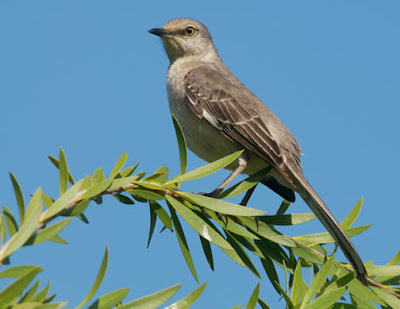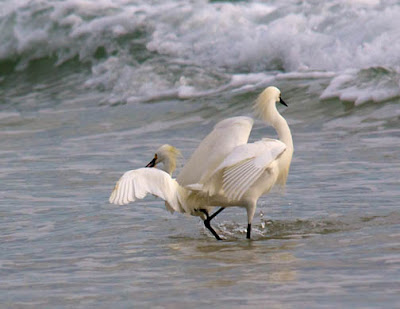Sunny and warm in the mid 80’s, light winds
Change of plans. We were going to head north tomorrow, but got ahead of schedule and decided to get going today. We had a late start since we had to close down the condo first, but eventually got to Harris Neck National Wildlife Refuge by about noon. We called our friend Joe who had gotten a much earlier start and he encouraged us to make the stop as there were some very good birds to be had.
As we entered the refuge, the bird chatter which had been quiet for awhile according to Joe, rebounded and gave us reason start examining the canopy. First on tap was the unmistakable raspy call of the Summer tanager. He would have been the perfect initial image on today’s blog due to his spectacular red plumage, but he stayed back in the foliage and refused to come out for a photo. We did get a nice look at the next bird to begin calling, the Great-crested flycatcher. His bright yellow breast was easy to pick out high in the tree-tops, but like the tanager, he remained aloof as they so often do and evaded the lens.
Finally, our next colorful member of the cast showed himself and came in close to give us our first real opportunity at capturing a fine image. The Yellow-throated warbler came in close to check us out and remained on the same low perch for some time.
 |
| Yellow-throated warbler |
As we were watching and photographing this bird, a Red-headed woodpecker flew into view. With a little careful stalking, we were able to get close enough without spooking this handsome bird to enable us to grab another good image for the day.
With all these colorful birds surrounding us, we wondered how it could get any better. Probably the only bird which could upstage these radiant characters suddenly appeared from the woods and began foraging along the forest edge. The Painted bunting, both sexes, came in and hopped in and out of the sunlight. Although a bit distant, his brilliance was easily captured by the lens.
Finally, down by the first lake of the reservoir, a bird which is not always thought of as being among the most brightly hued of the avian world came in a perched upon a stump. The light caught his plumage and especially his eye in such a way that you could not help but add him to today’s gallery of splendidly adorned birds.
Spring certainly does bring out the best in all of nature’s bounty.




















































